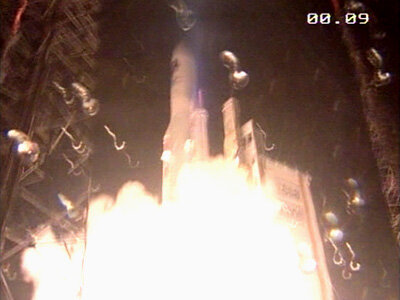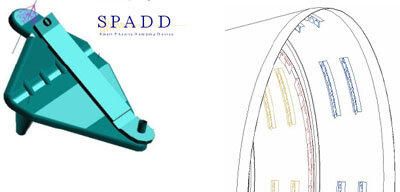Space tech smooths steps
It won’t be quite like walking on the Moon, but one French company is hoping to bring some bounce to your step with the help of ESA.
A spin-off company of Toulouse-based ARTEC Aerospace in France, CAP-K uses damping devices in the soles and heels of shoes to absorb shock and improve stability. The technology, originally developed for Europe’s Ariane launcher, is compact and affordable.
ESA’s Technology Transfer Programme funded a feasibility study to help ARTEC and CAP-K research ways to adapt its space-oriented solutions to a broader consumer market: shoes.
The EU is the world’s largest footwear market, with annual sales of €50.3 billion – a massive opportunity for companies.

A large part of that market is attractive footwear that is also comfortable enough for long days of walking and standing. The CAP-K approach bucks the trend among engineers and designers of reducing vibration by making things bigger and heavier, swaddling a product in added insulation and padding.
“Engineers are always increasing mass,” says CAP-K’s Michel Hayard.
Take a quick look at the footwear market, and it’s clear that shoemakers work the same way. Comfort-oriented shoes are usually chunky and blocky.
CAP-K’s solution to making more comfortable shoes isn’t to make them bigger – it’s to make them smarter.

To do it, they’re using an innovation developed for Ariane. The breakthrough came in the mid-1990s, when parent company ARTEC Aerospace was working on ways to protect delicate satellites from vibrations during launch.
Their ‘SPADD’, or Smart Passive Damping Device, technology has been used on Intelsat, Inmarsat, Integral, MetOp and Amazonas satellites.
Says Mr Hayard: “The trick is to deviate this energy and drive it to a precise location, then trap the energy.”

By placing the SPADD-pads just right, they can be much less bulky and heavy than conventional vibration-reduction technology, a huge advantage in space applications where weight is at a premium.
Still, figuring out just where to put the damping device on everyday shoes was a significant investment for a company more used to highly technical space applications.
“It takes a lot of simulation and calculation, which is expensive and takes a lot of time. We succeeded in simulating the human leg, to see where the shock is when you walk.”
Modelling where to place SPADD dampers can cost upwards of €100 000. That’s why understanding the best way to transfer their discoveries to a wider market was so important.

Through an ESA technology transfer feasibility study, CAP-K was able to hire marketing consultants to identify the best strategies for breaking into a highly competitive – and highly profitable – sales segment.
“The Technology Transfer Programme has helped us a lot,” says Mr Hayard. “We adapted the technology for a specific application, so when we tried to transfer it to the shoe market we needed some help understanding the market.”
So far, CAP-K shoes are available in two Toulouse stores and from the company’s online boutique. With the help of ESA’s study, the company hopes the product can make it into the ranks of well-known brands.
ESA’s Technology Transfer Programme Office (TTPO)
The TTPO’s main mission is to facilitate the use of space technology and space systems for non-space applications and to demonstrate the benefit of the European space programme to European citizens.
The office is responsible for defining the overall approach and strategy for the transfer of space technologies, including the incubation of start-up companies and their funding. For more information, please contact:
ESA’s Technology Transfer Programme Office
European Space Agency
Keplerlaan 1
2200 AG, Noordwijk
The Netherlands
Tel: +31 71 565 6208
Email: ttp@esa.int






